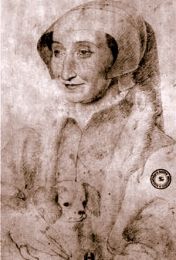Francis I Historical Profile
Jump to navigation
Jump to search
"
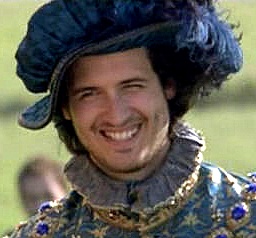 | The History of Francis I King Of France 1494 -1547 ( aged 53) Reigned 32 years 1515 - 1547 | 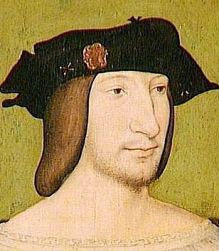 |
INTERESTING FACTS:
| 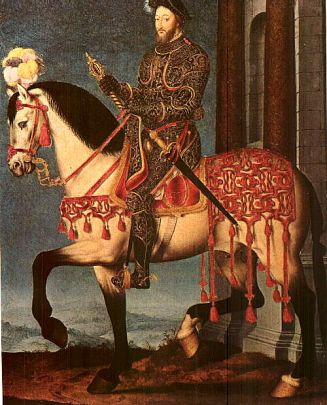 During his visits to Italy, Francis read Baldassare Castiglione's The Book of the Courtier which so inspired him that he had it translated into French. He had several copies made, which he brought back to France to distribute amongst his courtiers. He felt that this book portrayed the model royal court and he strove to create this type of court for himself. In the book, the courtier is described as having a cool mind, a good voice (with beautiful, elegant and brave words) and proper bearing and gestures. At the same time though, the courtier is expected to have a warrior spirit, to be athletic and to have good knowledge of the humanities, classics, and how to draw and paint. To this day, the Book of the Courtier remains the definitive account of Rennaissance court life. In its own day, however, it was used as a manual on how to be the "Perfect Courtier" and the consummate "Court Lady."
| |
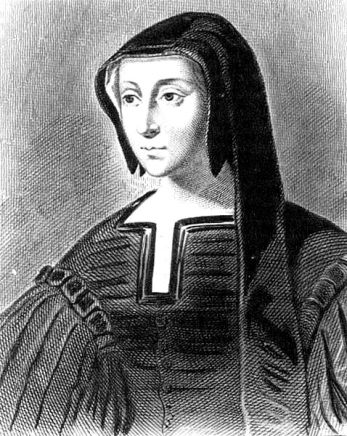 | Left : Louise of Savoy - Francis' mother and major influence in his life: Francis appointed Louise of Savoy as his regent in 1515-16 when he was absent during Italian wars. In 1522, she was accused of diverting war funds to her own treasury; she denied any part in the scandal. In 1525-26 when Francis again went to fight the Italian wars, she was his regent. She, with her daughter Princess Marguerite of Navarre, arranged an alliance with King Henry VIII of England, in which Henry broke his alliance with Francis' war opponent, the Holy Roman Emperor Charles V.Louise and Marguerite then negotiated Francis' release from Spanish captivity, and negotiated the Treaty of Cambrai (called "The Ladies Peace") with Margaret of Austria, aunt of Charles V. Louise of Savoy died after becoming chilled while watching a comet in 1531. | |
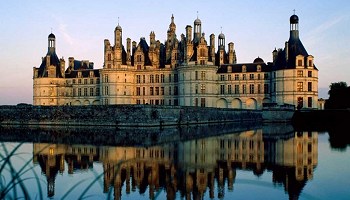 Château de Chambord is without a doubt, one of the most remarkable Renaissance castles in France. Many call it the most beautiful Château of the Loire Valley, but all agree that its scale and majesty are impressive. Château de Chambord is without a doubt, one of the most remarkable Renaissance castles in France. Many call it the most beautiful Château of the Loire Valley, but all agree that its scale and majesty are impressive.François the First (Francis I) spent lavishly to realize the project of the Château de Chambord. In fact, the construction of the castle took more than a quarter of a century. Started in 1518, the work was stopped in 1525 when the coffer of the Kingdom was empty. The work could be resumed only in October 1526. From this date forward, one could find up to 2000 workers at the site. Having to give up the crazy project of rerouting the <a class="external" href="http://www.francedirect.net/Loire-RP42.html" rel="nofollow" target="_blank">Loire</a> to bring the river to the foot of the castle, Francis I did not hesitate to divert one of its tributaries, the Cosson, to come to the Château . The Château was completed in 1547 and contains 440 rooms, 84 staircases, 365 fireplaces (one for each day of the year). It also has stables to accommodate 1200 horses. The domain is surrounded by 32 km of walls, protecting more than 12,000 acres of woods which is a huge hunting reserve whose surface equals that of <a class="external" href="http://www.francedirect.net/Paris-RP74.html" rel="nofollow" target="_blank">Paris</a>! - source: francedirect.net | 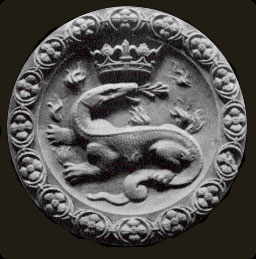 Francis' emblem - the Salamander (Also used my Mary Queen of Scots) Francis I took every opportunity to embellish the Château de Chambord with the letter "F" and also with a stylized Salamander, his emblematic animal. Still today, you will see these F’s and salamanders around the castle, especially on the decorated vaults of the third floor. As the symbol of fire and cold, the salamander was François’ chosen symbol. This animal could live in the fire without being consumed, but it could also extinguish the fire due to the exceptional coldness of its body. In the medieval iconography the salamander represents "the just who never loses God’s confidence in the middle of tribulations." François the First adapted this motto for himself: "I live among it and extinguish it". | |
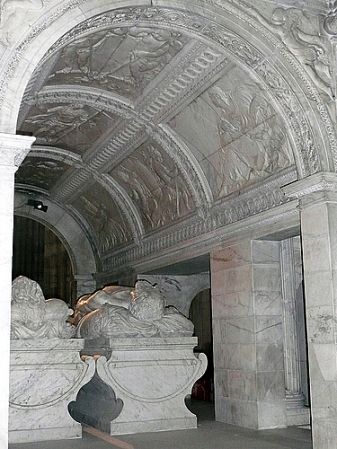 Tomb of Francis I and Claude of France in the Basilica of Saint Denis, Paris | LITERATURE:
| |
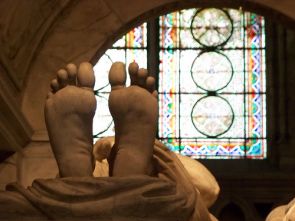 Another view of Francis I tomb | 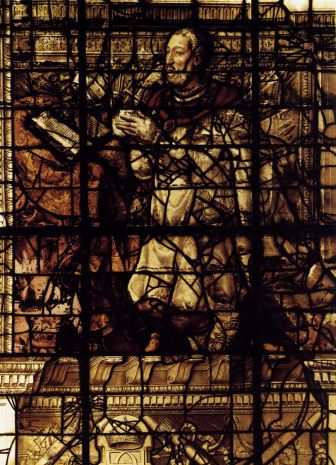 c. 1551 - 1556 Stained Glass window of Francis I praying at the Musee nationale de la renaissance | |
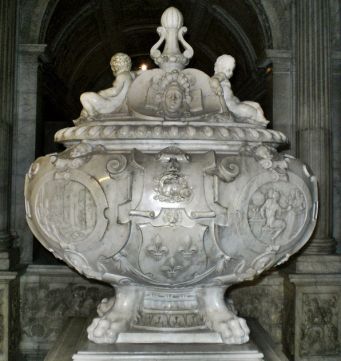 The Funerary Urn of Francis I. Resting place of his heart. Located in the "Basilique Saint-Denis" Paris, France |
